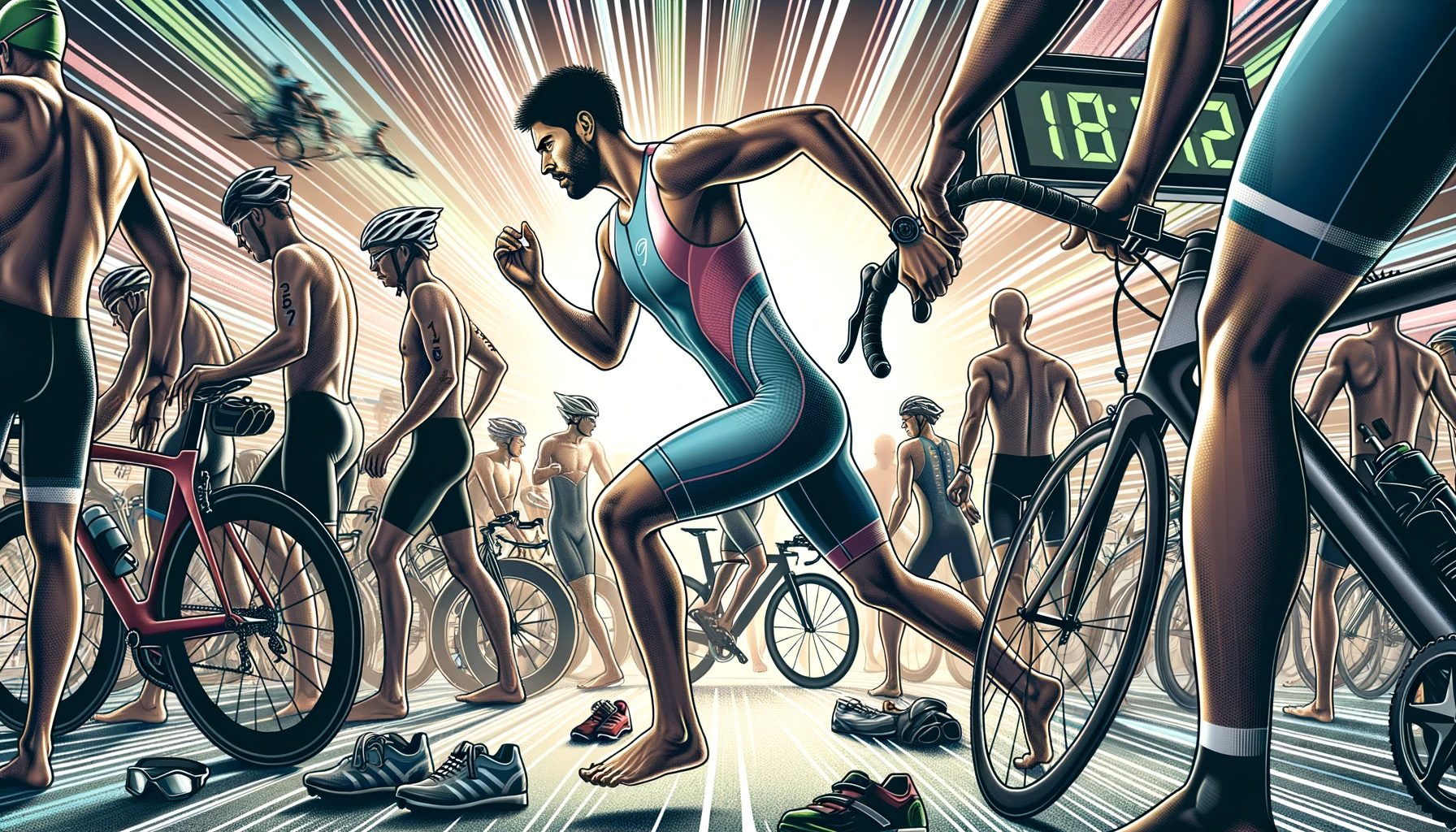Mastering Transitions: The Fourth Discipline of Triathlons
Your Comprehensive Guide to Seamless Triathlon Transitions

Triathlons are a test of endurance, agility, and mental fortitude, comprising three demanding disciplines: swimming, cycling, and running. However, there’s a fourth discipline often overlooked but equally crucial — the transition. A triathlon transition is the phase between swimming-biking (T1) and biking-running (T2). It’s not merely about changing gear; it’s a test of an athlete’s agility, composure, and preparation. This comprehensive guide delves into the art and science of mastering triathlon transitions, offering actionable insights to shave off those precious seconds and enhance your race performance.
You train for months literally to shave off minutes in your swim, bike, and run time. If you screw up your transition, you could easily lose 5 minutes or more which is crazy.
The Paramountcy of Mastering Transitions
Transitions are more than just interludes; they are integral components of a triathlete’s performance. A seamless transition can save valuable time, while a bungled one can cost a race. Professional triathletes hone their transition skills to gain a competitive edge. A smooth transition acts as a morale booster, propelling athletes into the next stage with a surge of confidence.
Core Components of a Swift Transition
Pre-Race Preparation
A well-laid plan is the cornerstone of a swift transition. This includes familiarizing oneself with the transition area layout, gear placement, and the route to and from the transition zone. Visiting the transition area before the race, getting a feel of the environment, and knowing the entry and exit points can significantly reduce confusion on race day.
Gear Arrangement
The arrangement of gear in a transition area is a fine art. Here are some strategies:
- Helmet: Place your helmet upside down on your handlebars with the straps open.
- Shoes: Attach your cycling shoes to your bike in advance.
- Race Belt: Have your race belt laid out flat with your number visible.
- Nutrition: Ensure your nutrition is easily accessible.
Practice and Muscle Memory
Mastering transitions requires practice. Regular drills engrave the transition process into muscle memory. Here are some drills:
- Mock Transitions: Simulate race-day transitions, timing yourself to gauge progress.
- Bike Mounts and Dismounts: Practice getting on and off your bike quickly and safely.
- Gear Switch Drills: Set up a mini transition area and practice switching gear.
Common Transition Mistakes and How to Avoid Them
Mistakes are bound to happen, but identifying common transition errors and having solutions at hand can mitigate their impact.
Overcoming Panic
Transition areas can be chaotic. Maintaining composure amidst the hustle is crucial. Techniques like mindful breathing and having a checklist can help in maintaining calmness. It’s always good to visualize your transition procedure as well as the transition area the day before the race.
Transition Training Drills
From mock transitions to specific exercises targeting agility and speed, a variety of drills aimed at refining transition skills can be immensely beneficial.
Real-world Examples and Anecdotes
The realm of triathlons is filled with inspiring tales of athletes who’ve honed the art of transitions to their advantage. Let’s delve into a few notable instances:
The Brownlee Brothers’ Transition Mastery
Alistair and Jonathan Brownlee, the British triathlon sensations, are well-known for their transition efficiency. Their ability to swiftly change from swim to bike and bike to run has often given them a crucial edge over competitors. Observing their transition technique during various races provides a masterclass in efficiency and speed.
Chrissie Wellington’s Comeback
Four-time Ironman World Champion, Chrissie Wellington, showcased the importance of transitions during the 2008 Ironman Arizona. Despite facing a significant delay due to a flat tire, her swift transitions and unyielding determination led her to not only catch up but secure a victory with a substantial lead.
Mirinda Carfrae’s T2 in Kona 2014
Mirinda “Rinny” Carfrae, known for her exceptional running prowess, showcased a seamless T2 transition during the 2014 Ironman World Championship in Kona. Her ability to quickly switch from bike to run gear and immediately find her running rhythm played a crucial role in her chasing down the lead and securing a victory.
Conclusion
Mastering transitions is a journey of meticulous preparation, continuous practice, and learning from experiences. As you refine your transition skills, you’ll notice a significant impact on your overall race performance, inching you closer to your triathlon goals.










